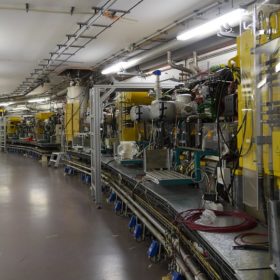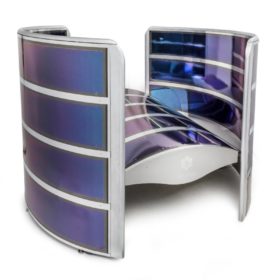Speeding up energy storage with pseudocapacitors
Scientists at Germany’s Helmholtz Zentrum Berlin have made a discovery they say could greatly increase the energy storage capacity of titanium-based ‘MXene’ pseudocapacitors, ultimately leading to faster-charging batteries. The group found adding urea molecules between MXene layers increased the material’s storage capacity by up to 56%.
Trade shows postponed over coronavirus fears
As the contagion continues to spread, its impact is beginning to be felt on the solar industry outside China with the cancellation or postponement of major trade shows and conferences that were set to take place over the next few weeks.
Bridging the gap between battery and supercapacitor
By engineering the structure of a hard carbon electrode, scientists at the CIC energIGUNE research center have created an ‘ultrafast battery’ which has been shown to combine the energy density of a lithium device with the fast discharge times normally associated with supercapacitors.
Healing the cracks for a more stable perovskite
Scientists in the United States have demonstrated simple methods for ‘healing’ the cracks that form in perovskite solar cells. While it is far from clear how the approach could be applied commercially, the work suggests possibilities for maintaining the performance of perovskite cells in long-term operation.
Recycling heat for a ‘385% efficient’ solar desalinator
MIT scientists have developed a solar desalinator which transports heat from the sun through a ten-stage process of evaporation and condensation. The group estimates a $100 device employing their innovation could provide the daily drinking water needs of a family.
The best battery for grid level energy storage
A new paper published by researchers at China’s Tianjin University examines the state of the art in grid level energy storage, outlining the pros and cons of various battery technologies being deployed on grids around the world, and remaining challenges that could be overcome if research is pushed in the right direction.
UK designers launch freestanding curved panel
Product development company the Cambridge Design Partnership, working with compatriot solar business Solivus, has developed a curved solar module featuring an organic thin film. The design is based on Solivus’ desire to “create a product so attractive that people would be happy to have one in their garden”.
The long read: All about albedo
With analyst predictions going as high as 40 GW for annual bifacial demand by 2023, it is imperative for stakeholders across the industry to understand the behavior of these modules in the field. Ground albedo and the way that diffuse and reflected light hits the rear side of the modules are the key concerns. A better understanding of these factors, gained from sophisticated yield-modeling simulations and bifacial test installations all over the world, has already helped to identify the challenges and opportunities in optimizing projects to maximize bifacial energy yield.
Perovskites meet the stability standard
European research group Solliance says its perovskite modules have passed three key industry standard reliability tests: Light soaking, damp heat and thermal cycling. The group said it is the first time perovskite modules of that size have achieved such results and represents a milestone in the technology’s move toward commercialization.
The long read: Model progress
While it has often been referred to as “the future of PV” in recent years, discussions surrounding bifacial technology are now very much in the present. Modules are beginning to roll off production lines in significant numbers, and industry players are boasting of gigawatts of bifacial projects that are already installed or in the late stages of development. But it’s still early days for the technology, and there are questions to answer for it to achieve its full potential. pv magazine investigates the modeling and optimization of bifacial PV’s performance.















